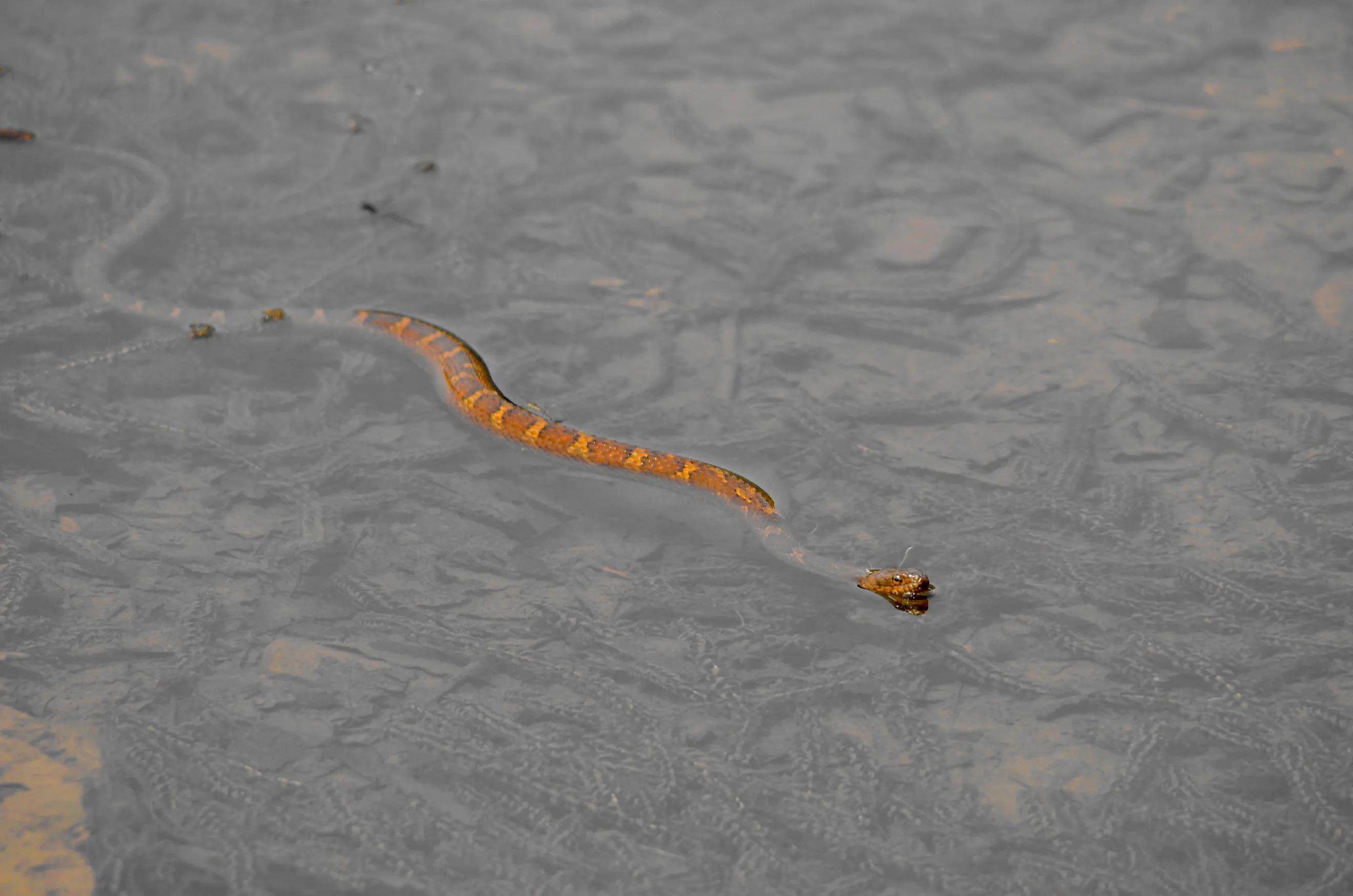
The Most Snake Infested Lakes In West Virginia
Snakes are some of the misunderstood creatures in the universe! While they may invoke fear in many, these skillful reptiles play a critical role in the ecosystem. In West Virginia, snakes thrive near the many lakes, rivers, and forests that comprise the state's diverse terrain. Below, we highlight some of the lakes in this region of the United States that serve as hotspots for various native snake species. From timber rattlesnakes coiling on sun-warmed rocks to non-venomous water snakes slithering through lily pads, these bodies of water provide ample habitat.
Contrary to their perceived reputation, most snakes are generally not aggressive toward humans and prefer to keep their distance. However, it is essential to know how to interact with them and avoid any unnecessary conflicts when hanging around the most snake-infested lakes in West Virginia.
Bluestone Lake
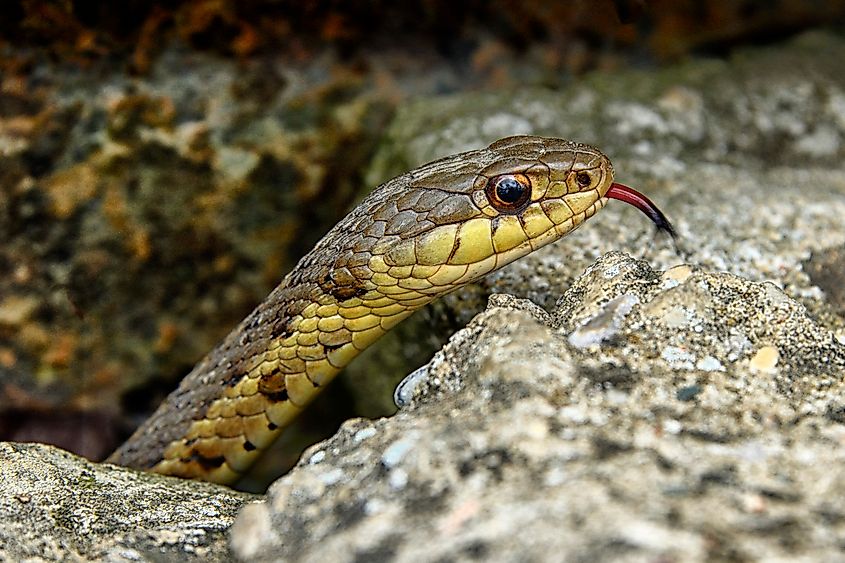
Spanning over 2,000 acres, Bluestone Lake is West Virginia's third-largest lake, resulting from a dam built across the New River to control flooding. It attracts scores of visitors seeking water-based recreation. Part of the Bluestone Lake Wildlife Management Area, the area provides the ideal habitat for wildlife to thrive, from fish and birds to small mammals and amphibians. These, in turn, serve as prey for the huge snake population. Common species include garter snakes and northern water snakes, often spotted hunting for small creatures along the lakeshore.
The region is also home to two of West Virginia's venomous snake species, the timber rattlesnake and copperhead. While generally not aggressive, they are not afraid to strike when you get too close for comfort. The best thing to do when running into them is to keep your distance and allow them to escape.
Burnsville Lake
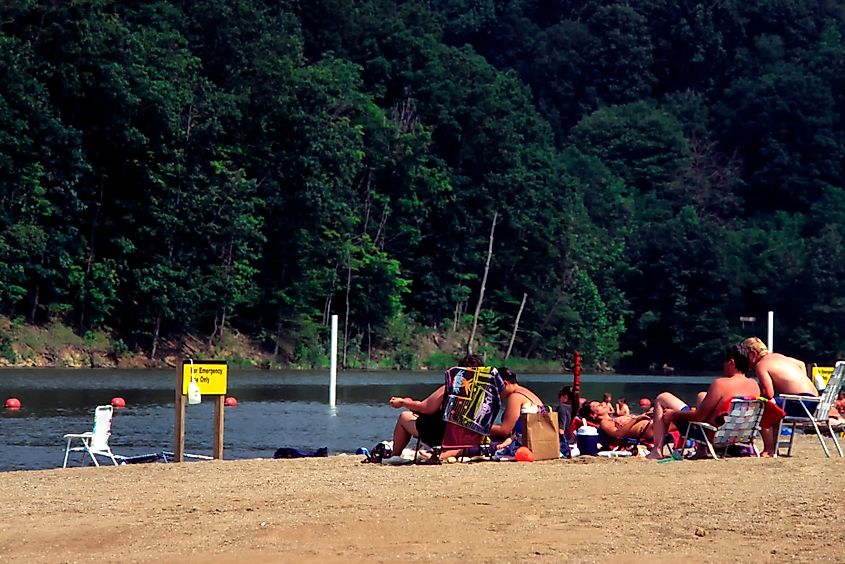
One of the largest lakes in the state's central region, Burnsville Lake is a flood control reservoir and a bustling recreational hub. Enthusiasts come from across West Virginia to take advantage of camping, swimming, hunting, picnicking, and other recreational opportunities. The lake is also a popular angling spot due to its decent walleye, bluegill, and catfish population. These, alongside small birds and mammals in the sprawling Burnsville Lake Wildlife Management Area, supply the diet of a vast snake population, especially northern water snakes and the eastern hognose snake.
While they may not be harmful, visitors should be wary of venomous copperheads and timber rattlesnakes. The latter is especially misunderstood and faces unwarranted persecution from the public. Before it attacks, it will produce a rattling sound with its tail to warn, which is your cue to back off.
Tygart Lake
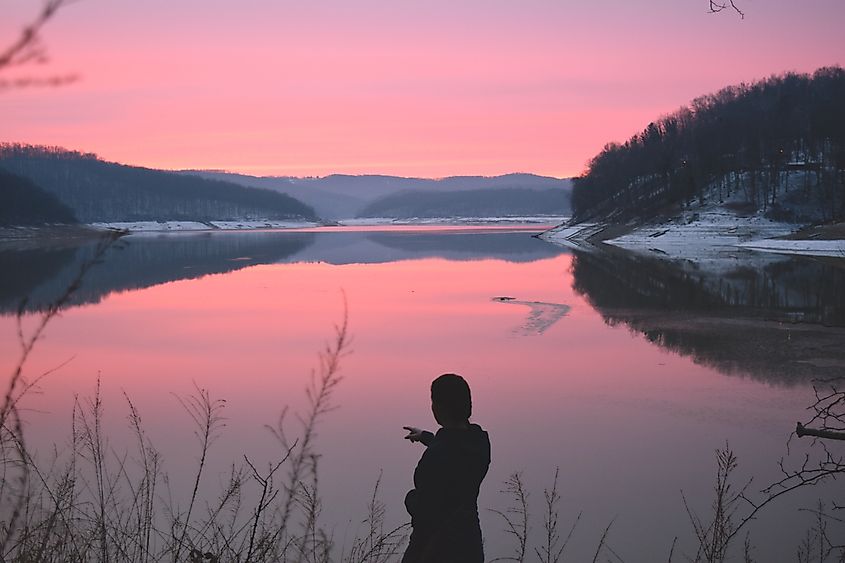
Set against the scenic backdrop of the Allegheny Mountains, Tygart Lake provides a serene environment for an easygoing vacation. It is part of Tygart Lake State Park and features a 10-mile-long shoreline with a 1,750-acre expanse. Unsurprisingly, tourists flock to the lake for various recreational activities, especially in summer. These include everything from kayaking and swimming to water skiing and fishing. Tygart Lake also presents the right conditions for various wildlife species to thrive, including snakes.
Visitors often document bumping into the slithery creatures, most of which are native species like the black rat snake, corn snake, and milk snake. Luckily, they are not venomous and pose little to no harm. Nevertheless, this does not give you an excuse to attack or harm them, as they play an essential role in the balance of the local ecosystem.
Stonewall Jackson Lake
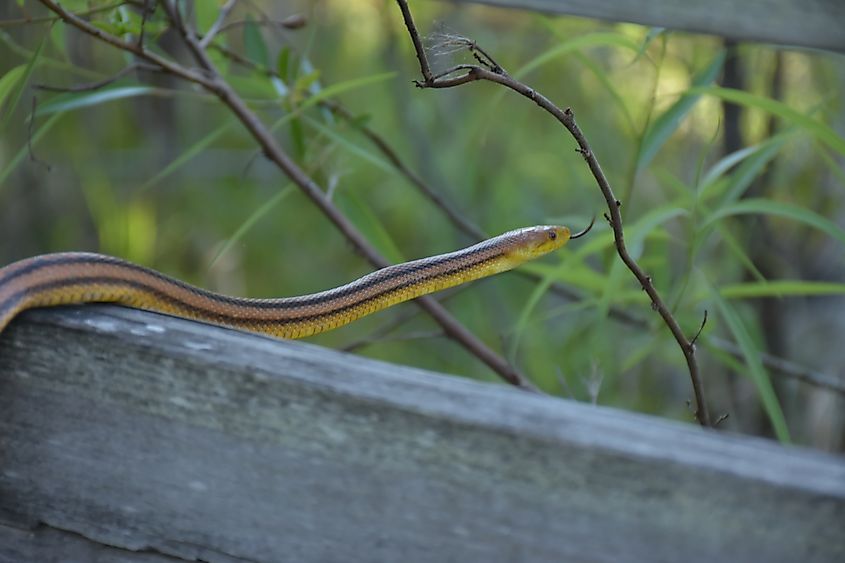
Created by an impoundment on the West Fork River, this 2,630-acre reservoir in Lewis County is a fishing and boating hotspot. It harbors various fish species, including walleye, largemouth bass, channel catfish, and black bass. Furthermore, the West Virginia Department of Natural Resources constantly stocks the lake to sustain recreational activity. The lake's 82-mile shoreline borders a dense wilderness area that presents an excellent snake habitat, where eastern rat snakes can be seen hiding among the debris and northern water snakes along the shores.
Other non-venomous species in the area include the eastern garter snake. Most species are relatively harmless to humans, and sightings of the two poisonous West Virginia species are rarely reported.
Cheat Lake
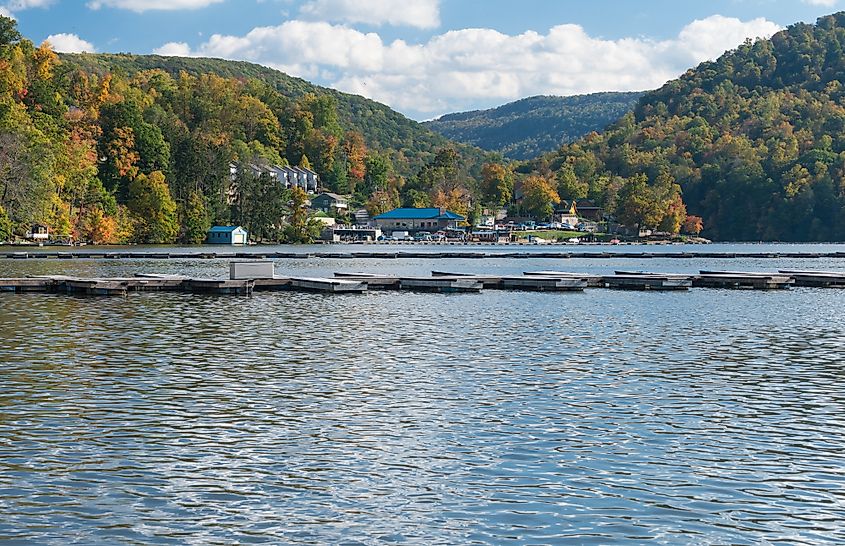
Cheat Lake Reservoir was created in 1925 by the Allegheny Power System for electricity generation. The lake sprawls approximately 1,730 acres and sits about 10 miles from downtown Morgantown, serving as a go-to recreational center. Fun opportunities abound, including hiking, swimming, and fishing, with white bass, yellow perch, and crappie found in abundance. Cheat Lake borders Snake Hill Wildlife Management Area and Coopers Rock State Forest, which hosts healthy snake populations that often stray into the lake's vicinity.
Visitors have reported multiple sightings and interactions with various species, most notably the timber rattlesnake. From swimming in the water to hiding in the tall grass along the shore, these snakes evoke fear due to their "venomous" reputation. However, they are generally benign creatures and are slow to show aggression.
Boley Lake
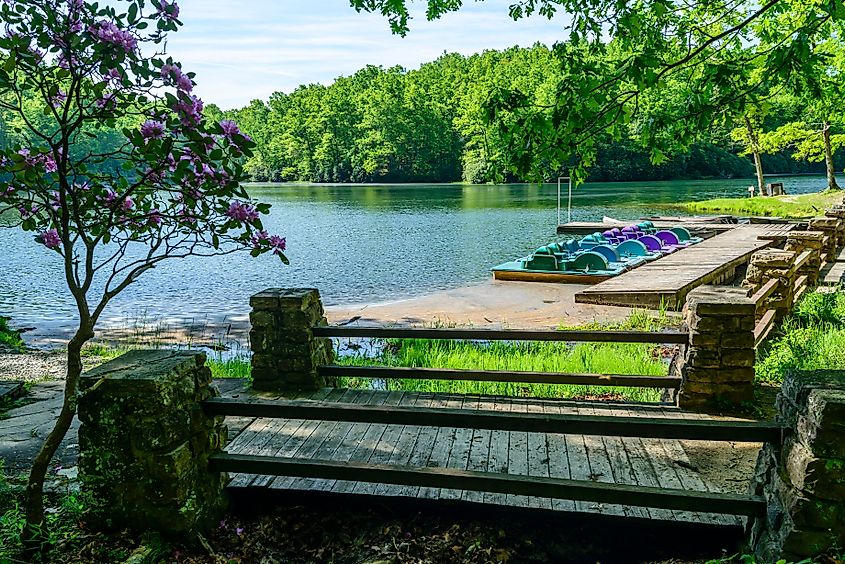
Although Boley Lake covers a small 18 acres, it is surrounded by the expansive Babcock State Park, home to a dense, forested wilderness. The serene lake is a famous fishing spot, regularly stocked with trout to encourage angling adventures. But visitors come for more recreation beyond fishing, including birdwatching, hiking, mountain biking, and camping in the sprawling Babcock State Park. The lush grasslands and thick woodlands bordering Boley Lake are habitats for diverse snake species that enjoy plenty of prey in the water and on land.
Garter snakes are a mainstay in the area and can often be seen hunting along the shore. Northern water snakes are also commonly spotted swimming in the water or basking on rocks. However, venturing into the thick vegetation can expose you to timber rattlesnakes and copperheads, which prefer the cover. As such, hikers should be more careful along the trails as these two species are poisonous.
Beech Fork Lake
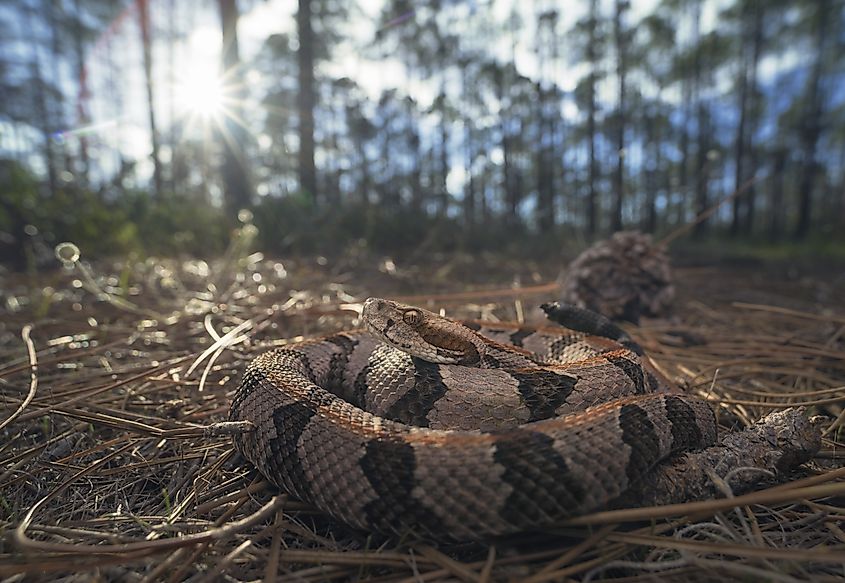
This 720-acre reservoir in Wayne County is one of the most snake-infested lakes in West Virginia. Famous for its abundance of recreational opportunities, human-wildlife encounters are day-to-day in the area. The reservoir features lush forested surroundings where adventurers come to camp, hike, hunt, birdwatch, and more. Some of the wildlife in the region include squirrels, doves, rabbits, and waterfowl. Together with the plenty of fish in the water, they provide enough prey for the bustling snake population across the Beech Fork Lake Wildlife Management Area.
Along the lakeshore, you may encounter rat snakes, northern water snakes, and eastern garter snakes preying upon frogs, rats, and other small mammals. Meanwhile, the hilly, forested areas harbor poisonous copperheads, which prefer the thick foliage cover. The same applies to timber rattlesnakes, which often bask on exposed rocks.
Hawks Nest Lake
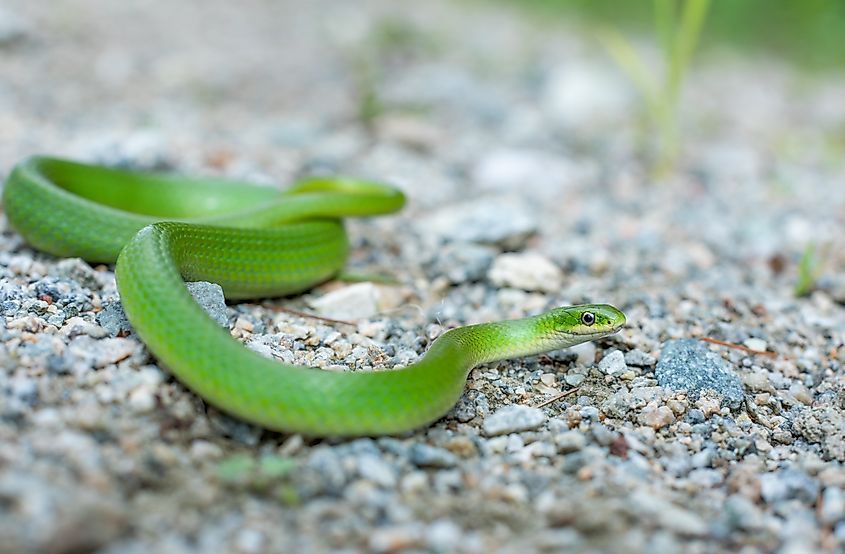
Hawks Nest Lake resulted from damming up the New River in 1934 for hydroelectric power generation and flood control. The 250-acre lake forms part of the Hawks Nest State Park, a sought-after destination for outdoor adventurers and enthusiasts. Activities range from hiking wilderness trails and jet skiing on the calm waters to soaking up stunning vistas of the New River. This means the park hosts a barrage of tourists in constant contact with the diverse wildlife population domiciled across its territory.
Between the different species of fish, birds, and mammals, tourists should be wary of the snakes thriving in the different habitats available. One notable sighting is the smooth green snake, which can be found foraging in the tree foliage. Luckily, these snakes are docile and usually flee when encountering a human. Others include the northern water snake and garter snake.
Final Thought
The lakes profiled above demonstrate why West Virginia rightfully earns its reputation as prime snake country, with each presenting ideal environments for various serpent species to thrive. From busy multi-use reservoirs to smaller lakes favoring solitude, observing these reptilian residents along forested shores and rocky slopes results in appreciation for the natural balance in which they play a key role. Ultimately, visitors who venture to these snake-infested lakes in West Virginia for recreation or study come away with an appreciation for these often misunderstood creatures in their ecosystems.











